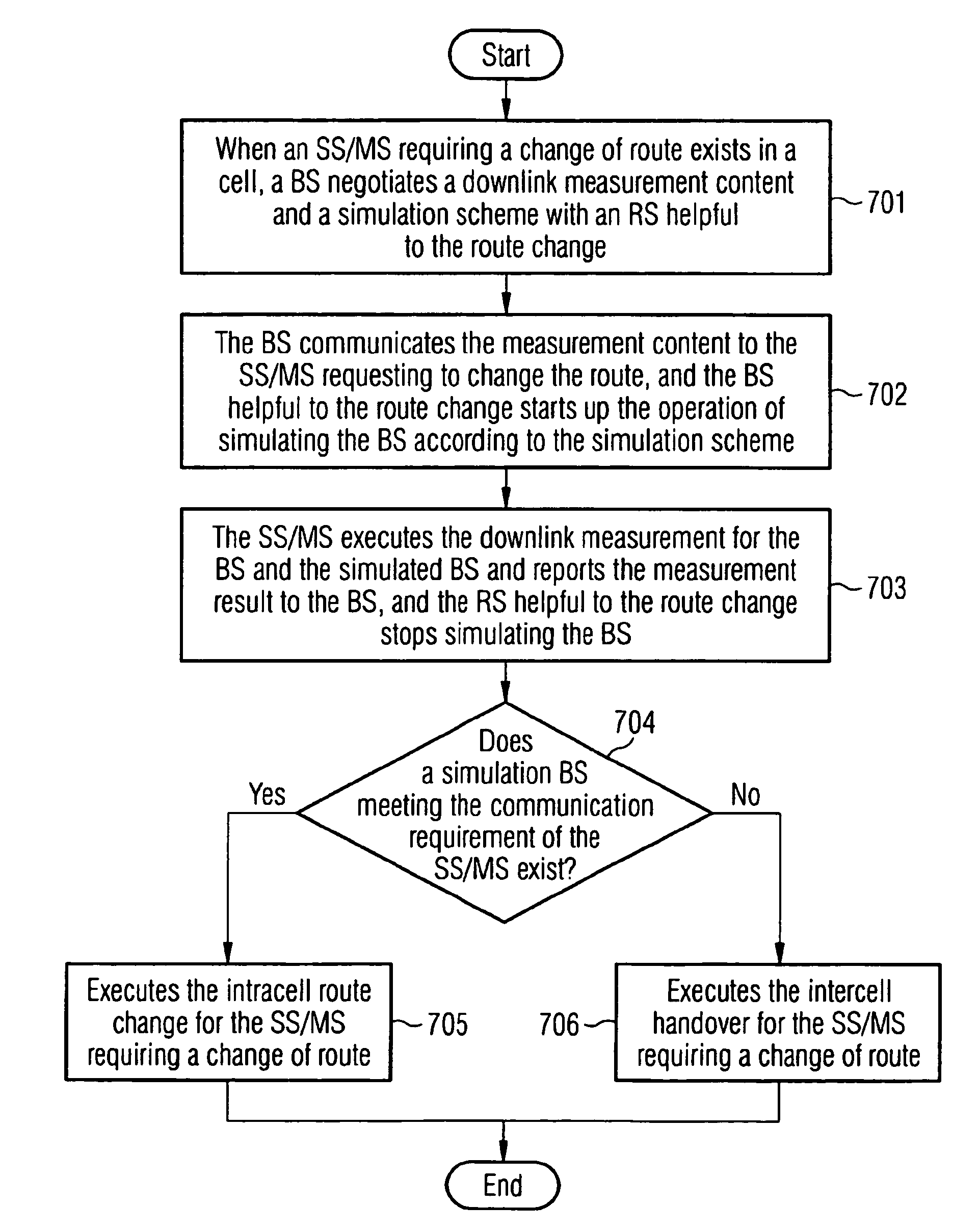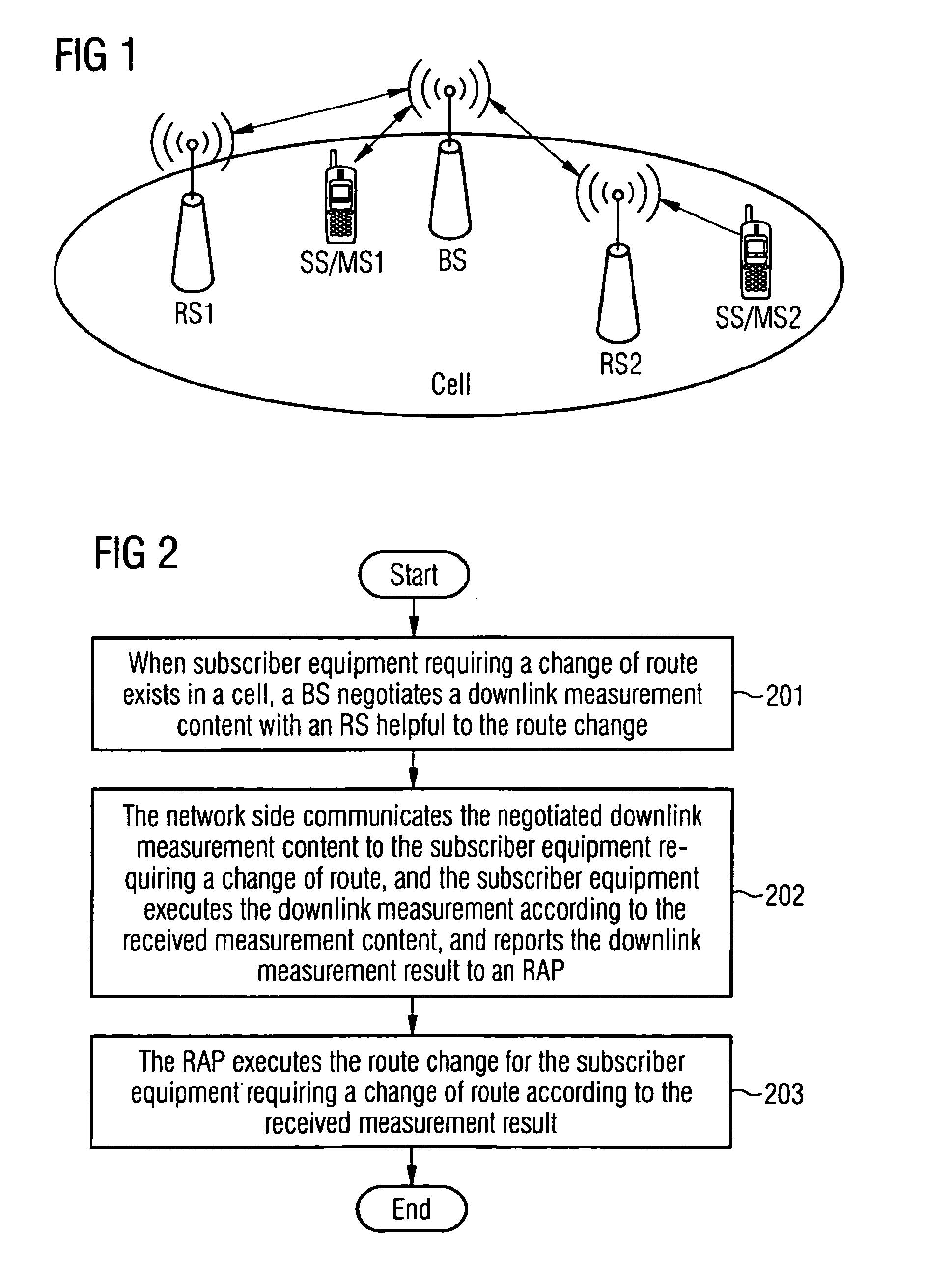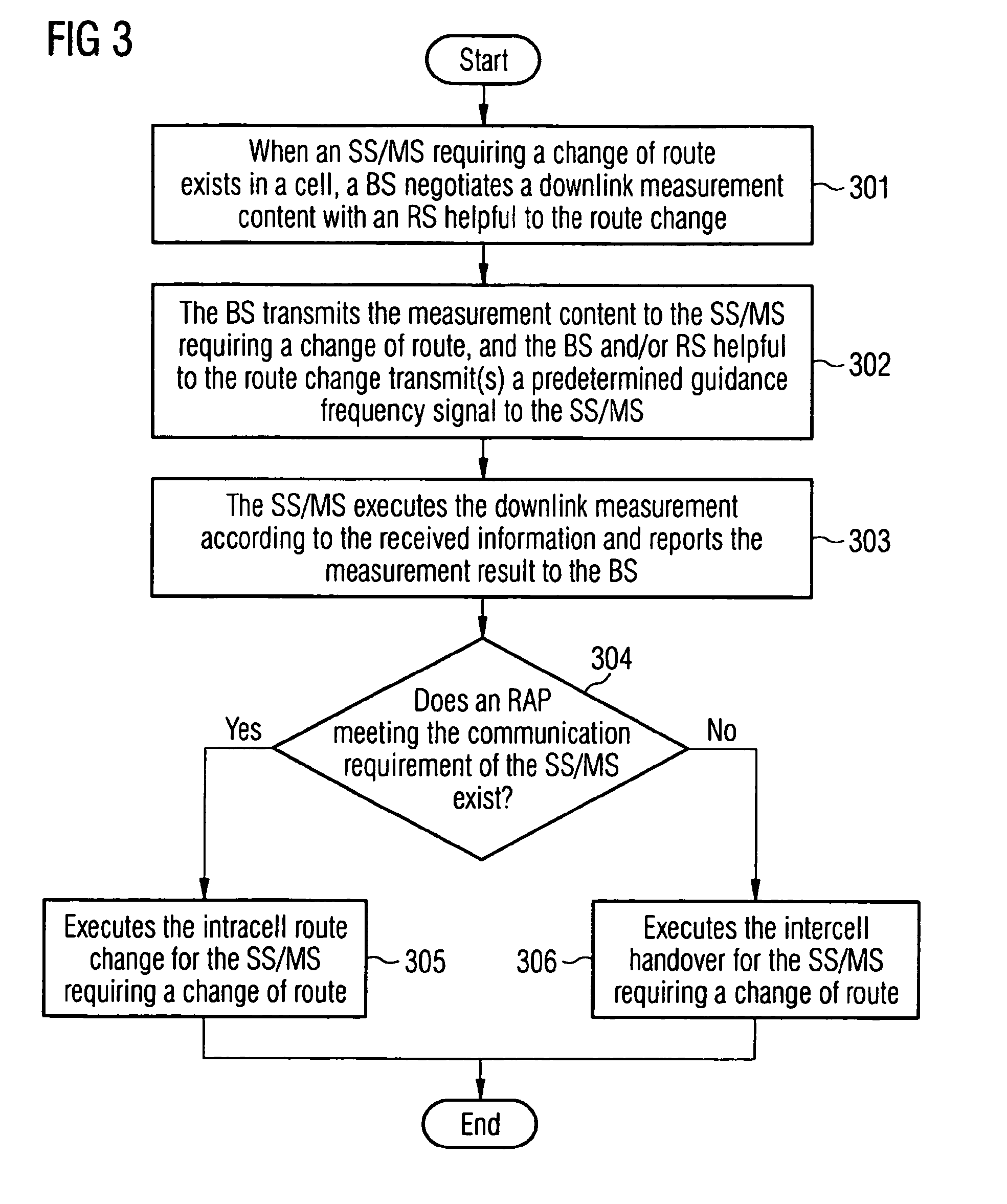Method for changing route in wireless communication
a wireless communication and route technology, applied in the field of route technology in wireless communication, can solve the problems of poor route change accuracy, inability to carry out a timely route change for an ss/ms, and to be switched to an unsuitable route, so as to achieve effective avoid failure, reduce delay in route change, and improve accuracy
- Summary
- Abstract
- Description
- Claims
- Application Information
AI Technical Summary
Benefits of technology
Problems solved by technology
Method used
Image
Examples
embodiment 1
[0072]In this embodiment, a long-term and fixed wireless resources division scheme is adopted, that is to say that, within a time of superframe level, such as 10 seconds or 1 minute, orthogonal wireless resources are assigned to each RAP in the cell. For example, if the wireless resources are 2M (bandwidth)×2 ms, a first half of the wireless resources therein, namely 1M (bandwidth)×2 ms, is assigned to the BS and the second half of the wireless resources, namely 1M (bandwidth)×2 ms, are assigned to the RS in the cell, and the resources occupied by each RAP are fixed within this time slot. In addition, in order to facilitate the subscriber equipment's execution of the downlink measurement, after the BS has negotiated with the RS facilitating the route change in this embodiment it transmits a predetermined pilot signal to the subscriber equipment via the downlink.
[0073]FIG. 3 shows a flowchart of the method for changing a route in this embodiment. Referring to FIG. 3, the method of th...
embodiment 2
[0090]In this embodiment, a dynamic wireless resources allocation scheme is adopted in the cell. In this case, the resources assigned to each RAP in the cell are not fixed for a period of time, but vary dynamically. However, it is similar to embodiment 1 in that, in order to facilitate the subscriber equipment's execution of the downlink measurement, in this embodiment after having negotiated with the RS, the BS also transmits the predetermined guidance signal to the subscriber equipment via the downlink.
[0091]FIG. 4 shows a flowchart of the method for changing a route in this embodiment. Referring to FIG. 4, the method of this embodiment comprises:[0092]in step 401, when the cell contains an SS / MS requesting the route change, a BS negotiates the downlink measurement contents and a resource allocation scheme with an RS facilitating the route change.
[0093]Since a dynamic wireless resources allocation scheme is adopted in this embodiment, at the same time when negotiating the downlink...
embodiment 3
[0102]In this embodiment, the long-term and fixed wireless resources allocation scheme is adopted in a cell, that is to say, within a superframe level, such as 10 seconds or 1 minute, fixed orthogonal wireless resources are assigned to each RAP in the cell, and the resources taken up by each RS are fixed in this long period of time. In addition, in contrast to the embodiments 1 and 2; no guidance signal is predetermined in this embodiment, but before the SS / MS requiring the route change executes the downlink measurement a data sequence is transmitted by the BS and the RS facilitating the route change over the downlink.
[0103]FIG. 5 shows a flowchart of the method for changing a route in this embodiment; referring to FIG. 5, the method of this embodiment comprises:[0104]in step 501, when the cell contains an SS / MS requesting a change of route, a BS negotiates the downlink measurement contents with an RS facilitating the route change.
[0105]The operation in this step is the same as that...
PUM
 Login to View More
Login to View More Abstract
Description
Claims
Application Information
 Login to View More
Login to View More - R&D
- Intellectual Property
- Life Sciences
- Materials
- Tech Scout
- Unparalleled Data Quality
- Higher Quality Content
- 60% Fewer Hallucinations
Browse by: Latest US Patents, China's latest patents, Technical Efficacy Thesaurus, Application Domain, Technology Topic, Popular Technical Reports.
© 2025 PatSnap. All rights reserved.Legal|Privacy policy|Modern Slavery Act Transparency Statement|Sitemap|About US| Contact US: help@patsnap.com



